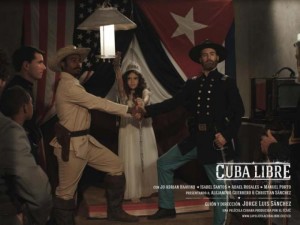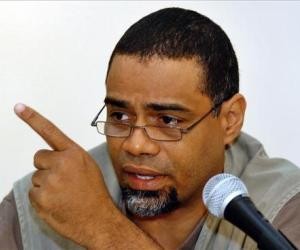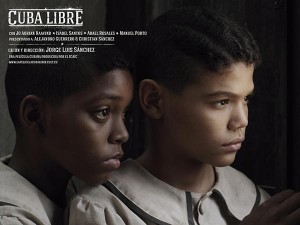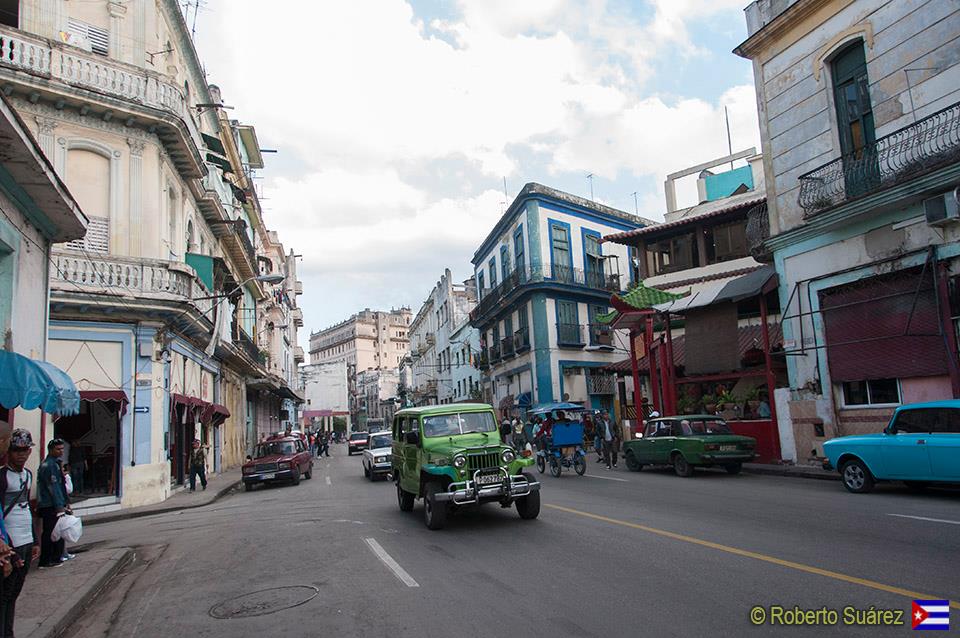FILM FESTIVAL EXHIBITS IN CUBA A PICTURE TO THINK ABOUT THE PAST.. AND PRESENT.
Cuban films exhibited during the 37th Festival of New Latin American Cinema, the farthest in our present time is free Cuba, the third feature by Jorge Luis Sánchez (El Benny, Irremediablemente together). At the same time, maybe it’s the one that forces us to think about our current reality.
Free Cuba, which after participating in the Film Festival will run from December 17 in the Yara cinema, is located at the end of the “necessary war” when the Liberation Army had virtually won the war against Spain, and the United States intervenes to “help” the mambises. Then we came what we know and what became aid. “Free Cuba” to which aspired those who fought for independence was reduced to a drink with the same name.
I heard from a professor script once if the end of a film viewers what they said was photography, editing and music, the story was “crap”. Exact words. So to do justice to free Cuba, I speak just of history that tells us the film.
Despite being in an episode known and repeated ad nauseam, in school and outside it, to remind us that the United States were, they have been and always will they be? our enemies, Jorge Luis Sanchez manages to catch the public’s attention, get involved, make us live this national frustration and can not do any kind of history or political discourse.
https://youtu.be/rnFZgdHXnmI
This is not an epic, full of heroic deeds by mambises. Although the story they were the protagonists in Cuba are free teens Samuel (Christian Sanchez) and Simon (Alejandro Guerrero). It is through their eyes, their experiences and how they are handled and become entangled in history, we see the conflict. But beware, it’s not a couple of innocent children, or in any case are also petty sometimes able to steal, lie and flatter, according to the convenience of the moment. We talk about very human characters, nuanced, and just their interpretations are among the things that make this film worth seeing.
Speaking of performances, just to mention a couple of the actors complete the cast: Isabel Santos (the teacher) and Manuel Porto (the priest) to imagine the quality of the acting work in the film. You can not ignore the Swede Jo Adrian Haavind, who plays the American colonel. It was not possible to have a player of that country due to embargo regulations.
And although what to speak at the end of a film, at least in the first instance, according to the professor script, is the story told, it would be unfair not to mention the photograph of Rafael Solis and the rebuilding of the time which in free Cuba play an important role.
Unfortunately, some moments are unnecessarily didactic, like the scene where an American officer serving wine to his countrymen and speaks of the virtues of the Cuban people. Some scenes of groups, both those returning from the war, as the starving imploring food, are forced and implausible.
However, none of this prevents the film gets to where the director is proposed: the brain of the beholder. In an interview with Ballast Reynaldo Jorge Luis Sanchez stated that “the purpose of a film are not festivals, but the viewer’s brain”. This is a film that makes you think not only in the past but in the present.
When Jorge Luis Sanchez wrote his script in 1998, he could not imagine that free Cuba would be released one year after Cuba and the United States reestablished diplomatic relations amid the negotiations taking place between the two countries.
Since then, the Cuban people run the risk of remaining a mere spectator while powerful negotiated between them. Now there is no Spanish power; It is the political elite that has ruled the country for decades, outlawing and repressing any attempt of peaceful opposition, which is negotiating with the US government, and strives to leave out of the equation elementary questions of rights of Cuban citizens.
It is inevitable to think in this country when you see in the film how since the “US embargo” began to be a convenient excuse for shortages and price increases; how quickly some former Cuban faithful to Spain, declined to subscribe to the American occupation, provided this respect their interests; how even the most intransigent eventually give in and applaud the placement of the Statue of Liberty on a pedestal.
DDC / Yusimi Rodriguez Lopez, Havana / Internet Photos / YouTube.
The Cuban History, Hollywood.
Arnoldo Varona, Editor.
FESTIVAL DE CINE EXHIBE EN CUBA UNA PELÍCULA PARA PENSAR EN EL PASADO ..Y EL PRESENTE.
De los filmes cubanos exhibidos durante el 37mo Festival del Nuevo Cine Latinoamericano, el más alejado en el tiempo de nuestro presente es Cuba libre, tercer largometraje de Jorge Luis Sánchez (El Benny, Irremediablemente juntos). A la vez, quizás es el que más nos obliga a pensar en nuestra realidad actual.
Cuba libre, que tras participar en el Festival de Cine se exhibe desde el 17 de diciembre en el cine Yara, se ubica al final de la “guerra necesaria”, cuando el Ejército Libertador tenía prácticamente ganada la contienda contra España, y Estados Unidos interviene para “ayudar” a los mambises. Sabemos qué vino luego y en qué se convirtió la ayuda. La “Cuba libre” a que aspiraban quienes lucharon por la independencia quedó reducida a un trago con el mismo nombre.
Le escuché decir a un profesor de guión una vez que si al final de una película de lo que hablaban los espectadores era de la fotografía, la edición y la música, la historia era “una mierda”. Palabras textuales. Por eso, para hacerle justicia a Cuba libre, hablaré justamente de la historia que nos cuenta el filme.
A pesar de tratarse de un episodio conocido y repetido hasta la saciedad, en la escuela y fuera de esta, para recordarnos que los Estados Unidos fueron, han sido y siempre ¿serán? nuestros enemigos, Jorge Luis Sánchez logra atrapar la atención del público, involucrarnos, hacernos vivir aquella frustración nacional como no puede hacerlo ninguna clase de historia ni discurso político.
Esta no es una película épica, llena de hazañas heroicas por parte de los mambises. Aunque en la historia ellos fueron los protagonistas, en Cuba libre lo son los adolescentes Samuel (Christian Sánchez) y Simón (Alejandro Guerrero). Es a través de su mirada, de sus vivencias y la forma en que son manipulados y quedan enredados por la historia, que vemos el conflicto. Pero ojo, no se trata de un par de niños inocentes, o en todo caso lo son, además de mezquinos en ocasiones, capaces de robar, mentir y adular, según la conveniencia del momento. Hablamos de personajes muy humanos, llenos de matices, y justamente sus interpretaciones están entre las cosas que hacen este filme digno de ver.
https://youtu.be/rnFZgdHXnmI
Ya que hablamos de actuaciones, basta mencionar a un par de los actores que completan el elenco: Isabel Santos (la maestra) y Manuel Porto (el cura), para imaginar la calidad del trabajo actoral en el filme. No se puede obviar al sueco Jo Adrian Haavind, quien interpreta al coronel norteamericano. No fue posible contar con un actor de ese país debido a las regulaciones del embargo.
Y aunque de lo que se debe hablar al final de un filme, al menos en primera instancia, según aquel profesor de guión, es de la historia que nos cuenta, sería injusto dejar de mencionar la fotografía de Rafael Solís y la reconstrucción de la época, que en Cuba libre juegan un importante papel.
Desgraciadamente, algunos momentos resultan innecesariamente didácticos, como la escena en que un oficial norteamericano sirve vino a sus coterráneos y habla de las virtudes del pueblo cubano. Algunas escenas de grupos, tanto de los que regresan de la guerra, como de los hambreados que imploran comida, se ven forzadas y poco creíbles.
Sin embargo, nada de esto impide que el filme llegue a donde el realizador se proponía: al cerebro del espectador. En una entrevista concedida a Reynaldo Lastre, Jorge Luis Sánchez planteó que “la finalidad de una película no son los festivales, sino el cerebro del espectador”. Esta es una película que hace pensar no solo en el pasado, sino en el presente.
Cuando Jorge Luis Sánchez escribió su guión, en 1998, no podía imaginar que Cuba libre se estrenaría un año después de que Cuba y Estados Unidos reestablecieran relaciones diplomáticas, en medio de las negociaciones que tienen lugar entre ambos países.
Como entonces, el pueblo cubano corre el riesgo de quedar como simple espectador mientras los poderosos negocian entre ellos. Ahora no hay ningún poder español; es la elite política que ha gobernado el país por décadas, ilegalizando y reprimiendo cualquier intento de oposición pacífica, la que negocia con el gobierno norteamericano, y se empeña en dejar fuera de la ecuación cuestiones elementales de derechos de los ciudadanos cubanos.
Es inevitable pensar en el presente del país cuando ves en el filme cómo desde entonces el “bloqueo norteamericano” empezó a ser un conveniente pretexto para la escasez y alza de precios; lo rápido que algunos cubanos otrora fieles a España, se avinieron a la ocupación norteamericana, siempre que esta respetara sus intereses; cómo hasta los más intransigentes terminan por ceder y aplaudir la colocación de la Estatua de la Libertad en un pedestal.
DDC/Yusimi Rodriguez Lopez, La Habana/Internet Photos/YouTube.
The Cuban History, Hollywood.
Arnoldo Varona, Editor.



 FILM FESTIVAL Exhibits in Cuba a Picture to think about the Past ..and Present. + FESTIVAL DE CINE Exhibe en Cuba una Película para pensar en el Pasado .. y el Presente.
FILM FESTIVAL Exhibits in Cuba a Picture to think about the Past ..and Present. + FESTIVAL DE CINE Exhibe en Cuba una Película para pensar en el Pasado .. y el Presente.


